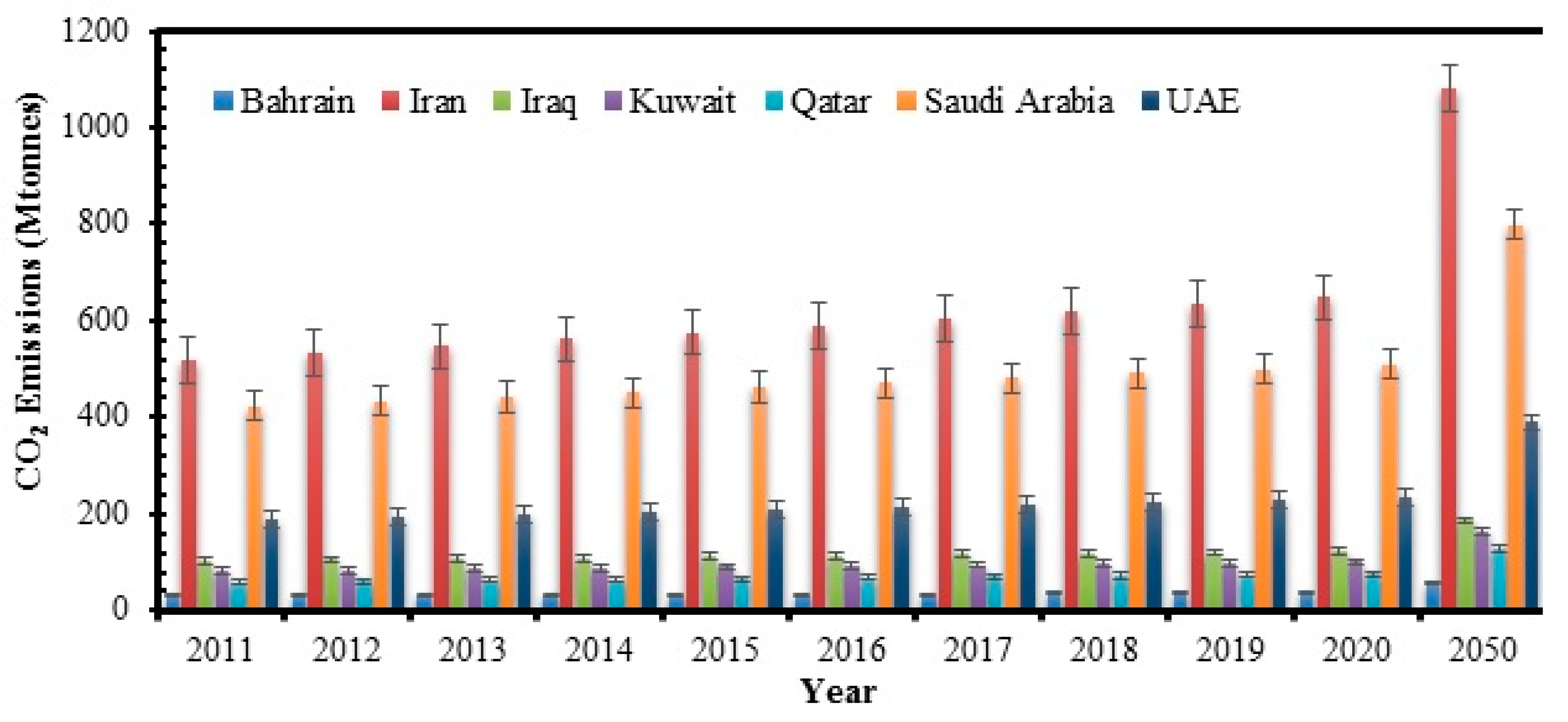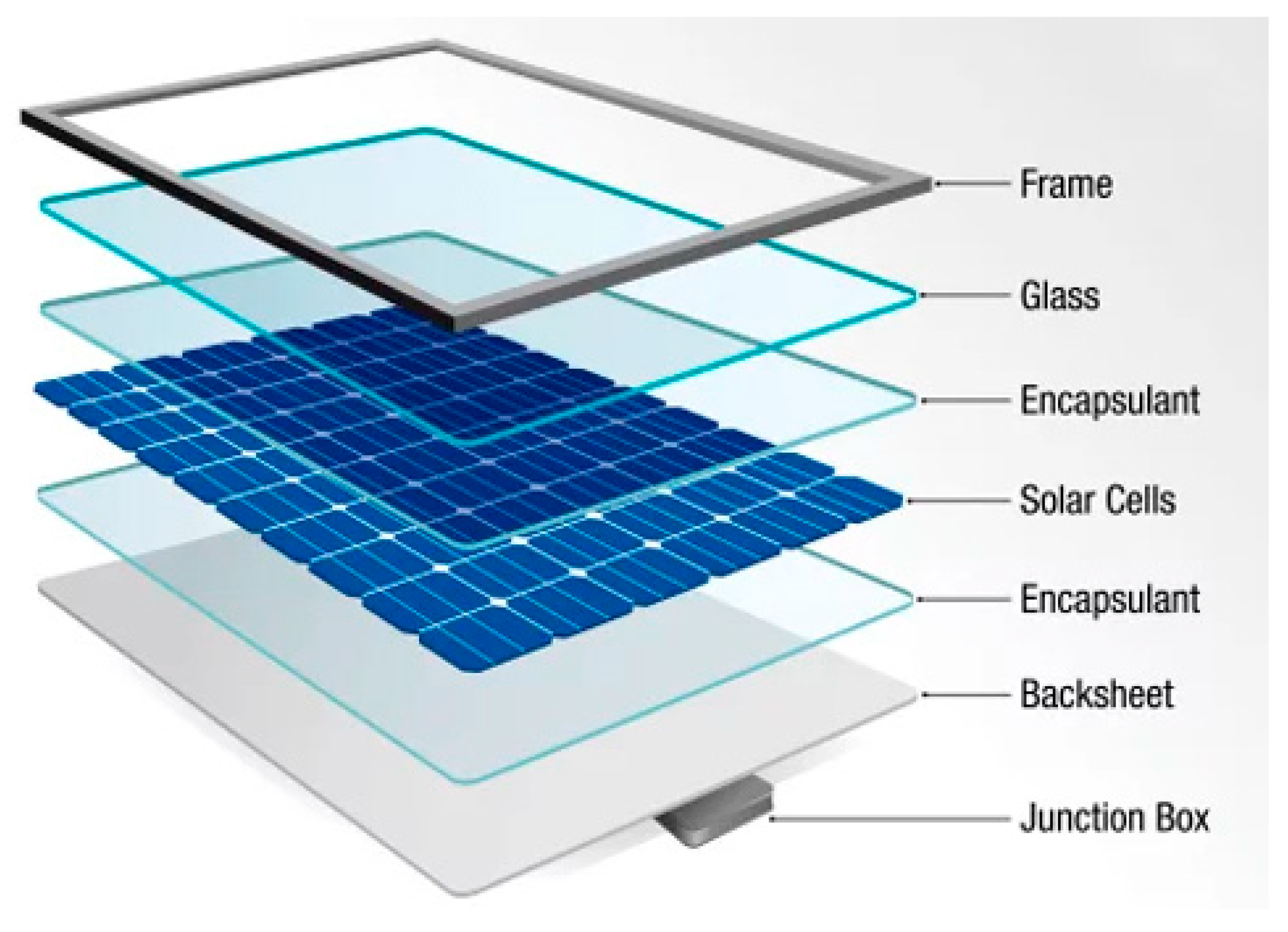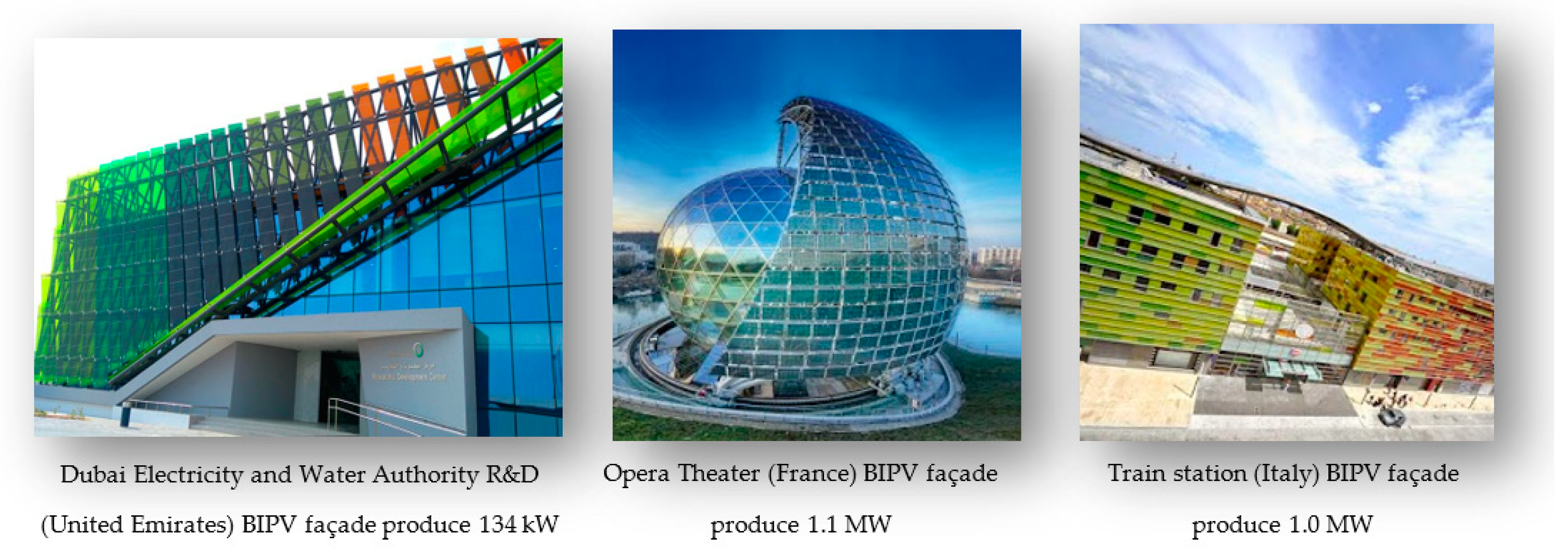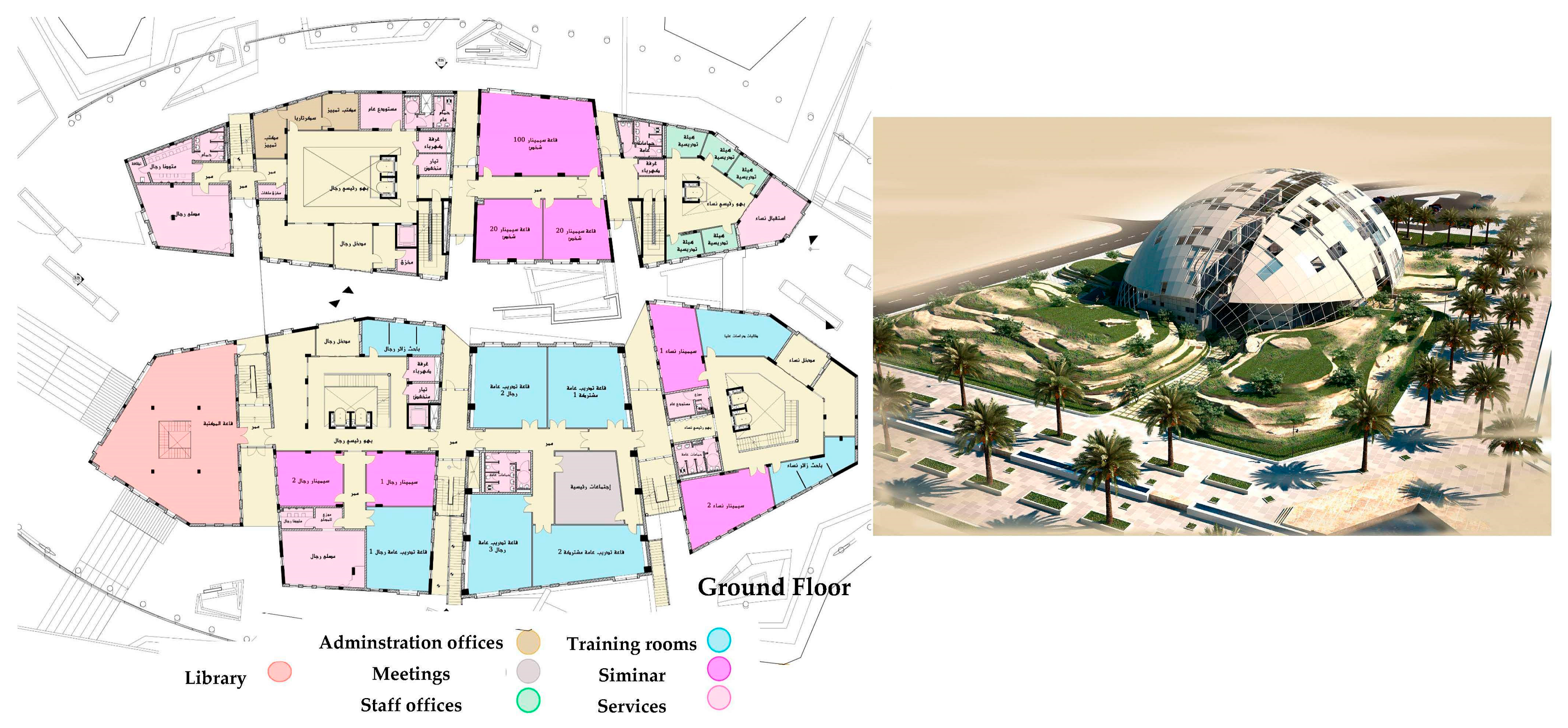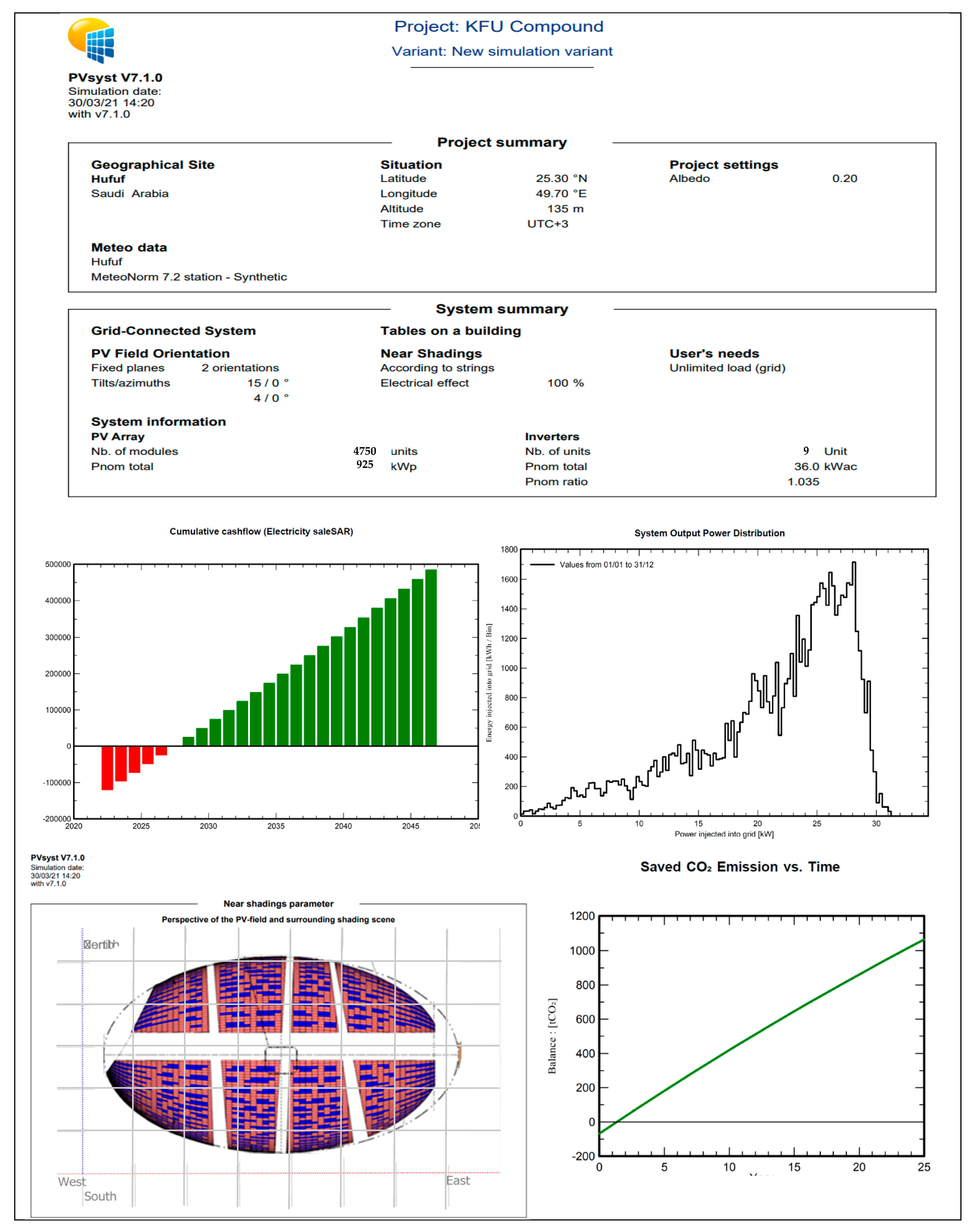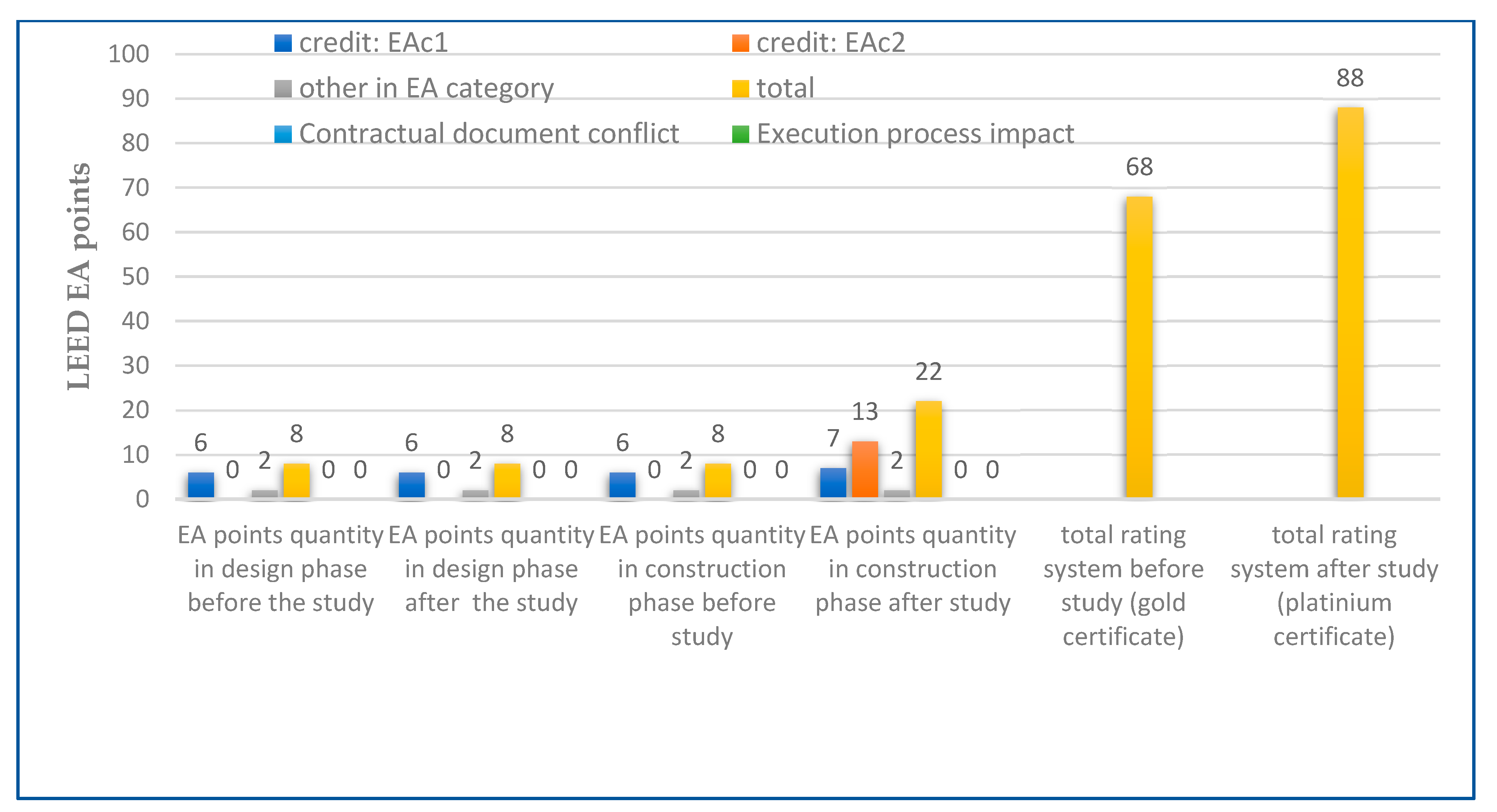Ensuring sustainable future is a key objective of the UN 2030 vision, which is highly acknowledged by the UN General Assembly under the Sustainable Development Goals (SDGs) which aim at achieving a comfortable and safe life, planet protection, development plans to prevent hunger and poverty, and reducing environmental degradation [
1]. The SDGs include 17 goals, 169 targets, and 244 indicators [
2,
3]. The goal number 7 in SDGs aims to enclose the affordable and adoption of clean energy, which has become the priority of many countries worldwide.
Saudi Arabia is the top country among the Gulf cooperation countries GCC in electricity consumption.
Figure 1 illustrates the growth consumption of electricity for the six GCC countries from 1990 to 2018 [
4,
5]. The carbon emissions from energy consumption have a long-term effect on the economic development in GCC [
6,
7,
8]. Saudi Arabia is the top among the GCC countries in CO
2 emissions where it produces 471.82 M tonnes of CO
2 (18 tonnes of CO
2/person).
Figure 2 shows the forecast of CO
2 emissions from 2011 to 2050 in GCC countries [
9,
10]. Therefore, the GCC countries, via new policies, measures, and legislative instruments, are promoting sustainable urban development and clean energy efficiency aspects, e.g., PV systems technology [
10,
11,
12,
13,
14].
The Saudi Arabia Kingdom (KSA) with 2030 Vision, is aiming to regulate the newly constructed buildings after the country was labeled with the highest ecological footprint in 2007 [
15]. The major goals of KSA 2030 Vision include a good life for society, a flourishing economic status, and an aspirant Saudi nation [
16]. The three main goals comprise nine sub-goals with broad line projects and implementation measures, especially in energy aspects, 13 implementation programs to achieve the 96 strategic objectives [
17,
18,
19]. The report of the renewable energy projects development office at the Ministry of Energy, will reduce the domestic energy consumption which is expected to exceed 120 gigawatts by the year 2032 [
20].
The national renewable energy program under the prosperous economy goal aims to establish the largest solar energy project plant in the world (located between 35° north and 35° south of the Kingdom) to generate 200 gigawatts at the cost of USD 200 billion in 2030 via solar plants. The first stage costs USD 5 billion with a capacity of 7.2 gigawatts [
21,
22]. The second stage is in Sakaka city—Al-Jouf region with 300 megawatts of clean energy for 45,000 housing units. The third stage offers 12 projects in phases with a total value of about USD 4 billion and produces 6.77 MW [
21,
22]. The solar system in construction projects in Saudi Arabia is still limited, where the use of renewable energy production in building roofs is about 1.6% of the existing renewable energy in Saudi Arabia. The KSA Vision plans to make the Kingdom a global logistics hub, promoting mining and energy industries, and solar systems in construction projects in line with the gulf standards for green building construction projects, which became mandatory procedures for all local municipalities in the major gulf countries [
23,
24].
1.1. Sustainable Rating Systems
Green and sustainable buildings contribute to a better environment, sustainability processes, and benefits to building owners and users throughout the project lifecycle [
25]. The regulations, which were addressed in green buildings, include a coalition of more than 80 countries around the world become mandatory in most of these countries in the building code for all public and private sector construction projects [
26]. Qatar has incorporated QSAS and GSAS certification in green building, comprising 140 sustainability assessment mechanisms, divided into eight sections [
27,
28]. Abu Dhabi green building regulations is running under the name of the pearl rating system in UAE and is the sustainability rating system for UAE to support sustainability from design to implementation to operation, including communities, buildings, and villas [
29]. Lebanon has a Lebanese Green Building Association LGBC as a cedar system for green building evaluation and assessment [
30]. Saudi Arabia established a sustainable building program and launched a building sustainability assessment “Mostadam” aims to raise the quality of life in residential buildings besides reducing water and electricity consumption, which will positively affect family health, the building internal environment, and reduce the operational cost [
22,
31].
LEED is an American sustainability rate system that supports buildings to consider a triple bottom-line approach to achieve returns for people, planet, and profit. LEED 2009 consists of rating systems for new design and construction, building operation, houses, and residential neighborhoods. Five overarching categories correspond to the specialties available under the LEED program called LEED rating systems, consisting of credit and prerequisites for the green building certification program [
32,
33]. The LEED 2009 system established points of potential environmental impacts and human benefits for each credit. LEED v4.1 version includes efficiency selections of energy, water, site, material, daylight, and waste management. The LEED rating system consists of perquisites, credits, and points that could be managed in a points system or a scorecard in eight categories with a total of 110 points. The four certification levels start from certified (40–49 points), then silver (50–59 points), gold (60–79 points), and platinum (80+ points) [
32,
33,
34].
BREEAM is the British Research Establishment Environmental Assessment Method, which is the sustainability assessment for buildings, master planning, infrastructure, and asset conservation [
35,
36]. The Australian Green Star rating system uses a robust assessment process. [
37]. The common international sustainable building certification and rating systems are LEED, BREEAM, and DGNB—“German Association for Sustainable Building”. A comparison between these international well-known rating systems is illustrated in
Table 1. The BREEAM and LEED have several advantages, a strong system and large market use with a score of more than 75 points [
38,
39].
1.2. Solar BIPV Modules in Building Envelopes
Different types of Solar PV panels serve different needs and purposes, while the classification by generation focuses on the materials and efficiency of different types of solar PV panels. The PV panels in the first-group solar are the traditional types of solar PV panels made of monocrystalline silicon or polysilicon, which are most commonly used with efficiency 21–23%. The PV panels cells in the second-group solar are thin-film solar PV cells (TFSC) such as silicon, cadmium, amorphous silicon solar PV cell, or copper onto a substrate, primarily used for to integrate buildings with photovoltaic power stations or smaller solar PV systems with efficiency 15–41%. The PV panels in the third generation solar include a variety of thin-film technologies; most of them are still in the research or development phase using organic materials. and some using inorganic substances, e.g., CdTe, concentrated PV cell curved mirror surfaces, CVP, and HCVP [
40,
41] with efficiency 15–18%. These different renewable resources and energy storage systems can reduce CO
2 emissions and costs by 50% [
27,
42] and affect financial returns [
35,
38].
The application of photovoltaic PV as a construction element in architectural structures and buildings is an abbreviation of the building-integrated photovoltaic BIPV. The key market driver for building integrated photovoltaics (BIPV) was the European Directive 2010/31/EU [
43]. The BIPV facades consider the energy road map for several countries in the construction industry [
44]. The advantages of using BIPV façades are the production of renewable electric clean energy, contributing to increase the degree of buildings sustainability towards net-zero energy construction [
45], producing more renewable energy on-site or close to the building, and support for CO
2 and heat island reduction [
46]. Planning buildings with multifunctional BIPV systems is an essential for architectural design and environmental concern [
47].
BIPV module surfaces are manufactured as flat or flexible type to be integrated in the building envelope. BIPV efficiency and productivity, which can be installed on roofs and façades, are affected by orientation, shading, and surrounding surfaces reflections [
48,
49].
Figure 3 shows the component of BIPV panels and
Figure 4 shows different international examples of BIPV facade design with the production rate [
50].
The idea of integrating PV panels with the building elements increases the prospects of renewable energy systems, and the assessment of BIPV potential is considered as a preliminary fundamental step towards supporting public decision-makers to achieve energy transition goals [
51]. The global BIPV market experienced fast growth, and the annual worldwide BIPV market was predicted to be more than 11,500 MWp in 2019 with high investment in the solar energy market.
Table 2 shows the global installation forecast of the BIPV growth from 2014 to 2020 [
51,
52].
This research discusses a holistic approach, which presents a comprehensive guideline of measuring and calculating the specifications of sustainable clean energy in the construction industry. The research adopted this approach in a pioneer case study to achieve the triple bottom sustainability benefits in energy consumption for an ongoing construction project inside an existing public campus in Saudi Arabia. Therefore, significant goals could be accomplished. First, at the project level, complete analysis and simulation were conducted to improve the specifications of the external envelope. It contributed to shifting the building towards a nearly zero energy building by covering more than 68% of the needed energy from renewable energy resources. It also contributed to the sustainability ranking of the case study in the sustainable rating system without any contractual conflicts. Second, at the campus level, a complete actual sustainable guideline approach was presented to the decision maker to apply the results to the remaining 76 campuses construction project. This contributed to reduction of the energy consumption, CO2 emission, and heat island loads, and enhancing the skyline looking at the whole campus. Third, at the Saudi Arabian level, these guideline specifications submitted an actual updating of applying renewable energy regulations and specifications. The significant contribution of the building facades and rooftops is to contribute to the required clean energy resource as a part of the Saudi vision 2030.
The study analysis for the case study built its approach based on two phases. The first phase is a numerical feasibility comparison in energy performance between the tender façade composite design and the new façade composite design. The second phase is the calculation of the clean energy production value and potential quantity of the sustainability points in energy performance. It can be applied in the case study to upgrade the existing sustainability ranking. The case study which was selected is registered in the LEED NC v3 sustainable rating system and awarded 37 points in the design phase and possibly pending 31 points in the construction phase. The holistic approach focuses on upgrading the design system of the building envelope from a passive energy envelope to an active energy envelope based on technical feasibility assessment and numerical comparison analysis, giving due consideration to project execution status, project cost, contractual situation, environmental impacts, and excellency needs.
The study opens the gate for various studies for improving contractual construction project documents with sustainability for enhancing building energy performance, under the sustainability rating system focusing on adapting active and passive envelope energy applications. Therefore, the next main questions arose. What is the practical approach to modifying contractual construction project documents to improve the building energy performance? Is it worth making a cost analysis to convert the passive envelope to an active envelope? What are the contractual risks encountered in the project in this case ? To answer these questions, the paper highlights the main research problem and explores the methods used. Then, it presents the results of the evaluation and assessment for the numerical calculations of the design of a new solar module cladding to the case study shell. The paper then concludes the research and discusses its limitation and future search venues.

